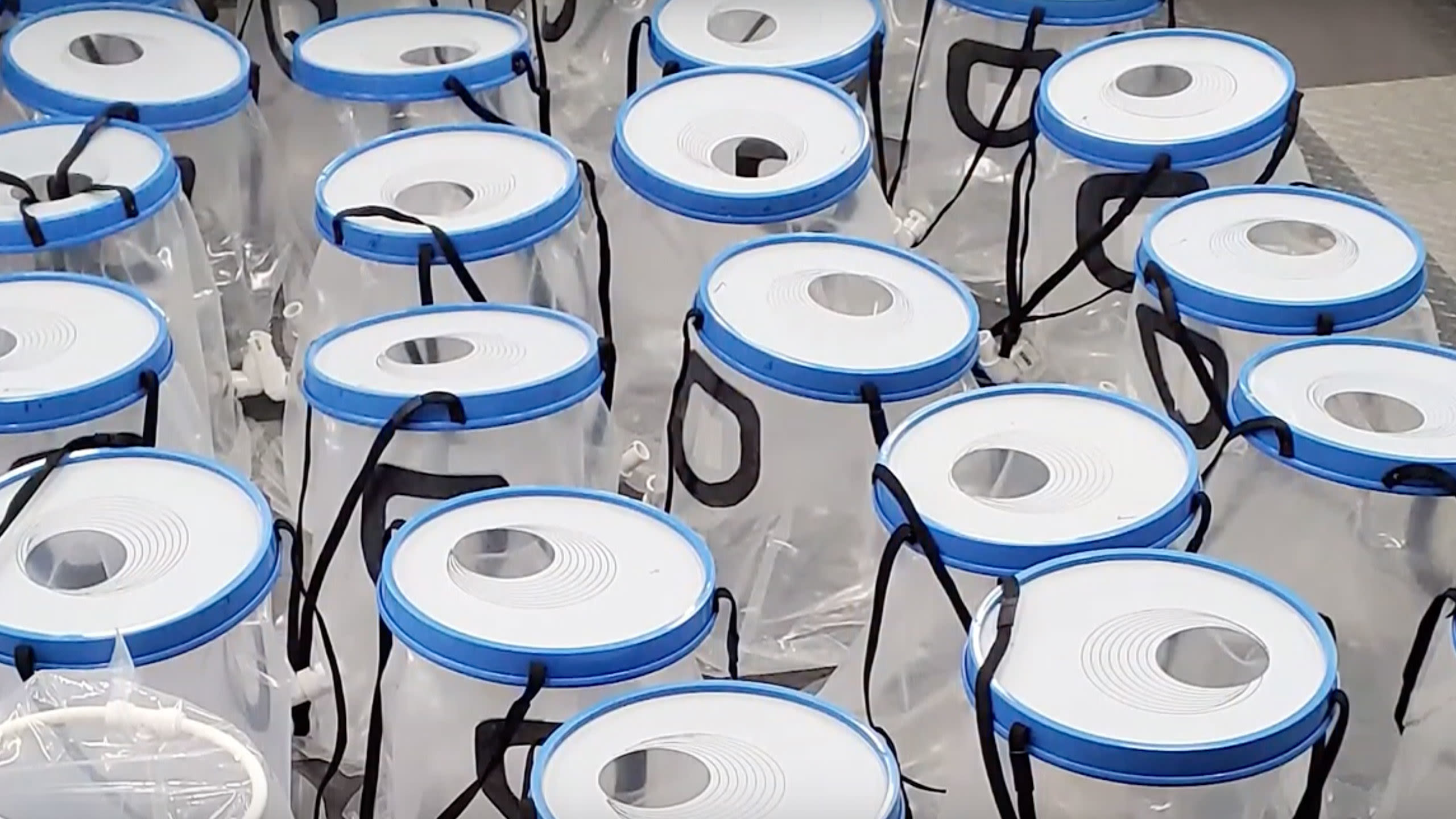Virgin Galactic design and build prototype patient oxygen hoods
Virgin Galactic and The Spaceship Company, as part of the Antelope Valley COVID Task Force, have collaborated with some incredible partners to design and build prototype patient oxygen hoods, which are being tested at Antelope Valley Hospital.
The Task Force was developed after doctors at the Antelope Valley Hospital (AVH) approached local aerospace engineers to work on fast solutions to the problems of providing care to COVID-19 patients. In response, engineers and technicians from Virgin Galactic and The Spaceship Company (TSC) joined with experts from the NASA Armstrong Flight Research Center, Antelope Valley College and the City of Lancaster to assemble a COVID task force. The group’s aim has been to help hospitals in this region manage the patient surge that is increasing demands on PPE and breathing assistance mechanisms and risking doctor and nurse health.
George Whitesides, CEO of Virgin Galactic and The Spaceship Company, has shared a letter on detailing the initiative. He wrote: “As we all continue to feel the direct impact of COVID-19 in our day-to-day lives, I’ve been inspired by the teamwork shown in the Antelope Valley of California to respond to the challenge of COVID-19. Now more than ever, it is crucial that we share knowledge, skills and collaborate.”
The team have designed and built several prototype patient oxygen hoods, which allow oxygen rich pressure to support those admitted with COVID-19 – opening up the alveoli in the lungs, and helping to delay or prevent Acute Respiratory Distress Syndrome (ARDS) from developing. By mitigating ARDS, the team hope this will then reduce the subsequent need for ventilator support.
The Task Force has also designed and built two designs for protective enclosures to reduce risk for health workers during intubation procedures, as well as a design for an antechamber for those workers to don and doff protective clothing. The Intubation Shield is a transparent enclosure that fits over the patient’s head with holes to enable a doctor to reach in and perform the difficult Intubation process with less exposure to COVID-19.
The team is also helping local hospitals set up a distributed oxygen delivery system for a local field hospital, to be ready for a potential surge in patients. Finally, the procurement teams of industry and the city are serving as an extra set of arms to rapidly source additional PPE and supplies for the hospitals, whether that be masks, fingertip oximeters, gowns or respirators.
Deputy Mayor Dr. Lawrence Stock, an Emergency Medicine Physician and Vice-Chairman of the Emergency Department and Chair of the Bioethics Committee at AVH, commented: “Early into the pandemic, AVH recognised the potential strain that COVID-19 could impose on our local medical resources. With the support of the team, what began as a conversation on 3D printing small connectors and parts, morphed into not only securing resources in high demand but also working prototypes for critical items within the hospital. It is mind-boggling. We are grateful and know together we can overcome this pandemic.”
Lancaster Mayor R. Rex Parris, who has been at the forefront of the preparation efforts, said: “With the impact of COVID-19 evolving daily, it became increasingly important to me to partner together to meet the needs of our community during this challenging time. The Antelope Valley has always been the heart of the Aerospace Valley. With a long history of changing the world, it is almost expected, and this time of crisis is no exception. This talented team has truly come together and created devices that will save lives. We are the example. I am incredibly proud of the ingenuity of this team and thank everyone involved.”
David Voracek, lead NASA engineer for the AV Task Force, and the chief technologist for NASA Armstrong, added: “We’ve looked across our Center’s expertise in innovation, engineering, design, and fabrication of unique systems, to bring NASA knowledge and people together to collaborate on solving the needs and challenges brought about by the COVID-19 situation.”
Head over to Virgin Galactic for more details on what the team has learned so far and how these lessons can be applied by other teams and communities. As George Whitesides said: “In these unprecedented times, our thanks continue to go to every member of this talented and growing team, who are working on, testing, or manufacturing these much-needed pieces of equipment. Most of all, we are thankful for the brave caregivers in our hospitals, clinics and labs who are on the front lines of this generational challenge. I continue to believe that human ingenuity, toughness, and community resilience will beat COVID-19 – and couldn’t be prouder of this team, at such a difficult time.”
Virgin Galactic are also livestreaming the second #ScienceWithVirginGalactic live on YouTube today. It’s a 20 minute Space Chat for children of all ages, all about How To Design A Spaceship, where you can learn about how a spaceship gets to space and back safely. Subscribe to Virgin Galactic on YouTube and watch today’s episode at 12.30pm EST/5.30pm BST/9.30am PT.


